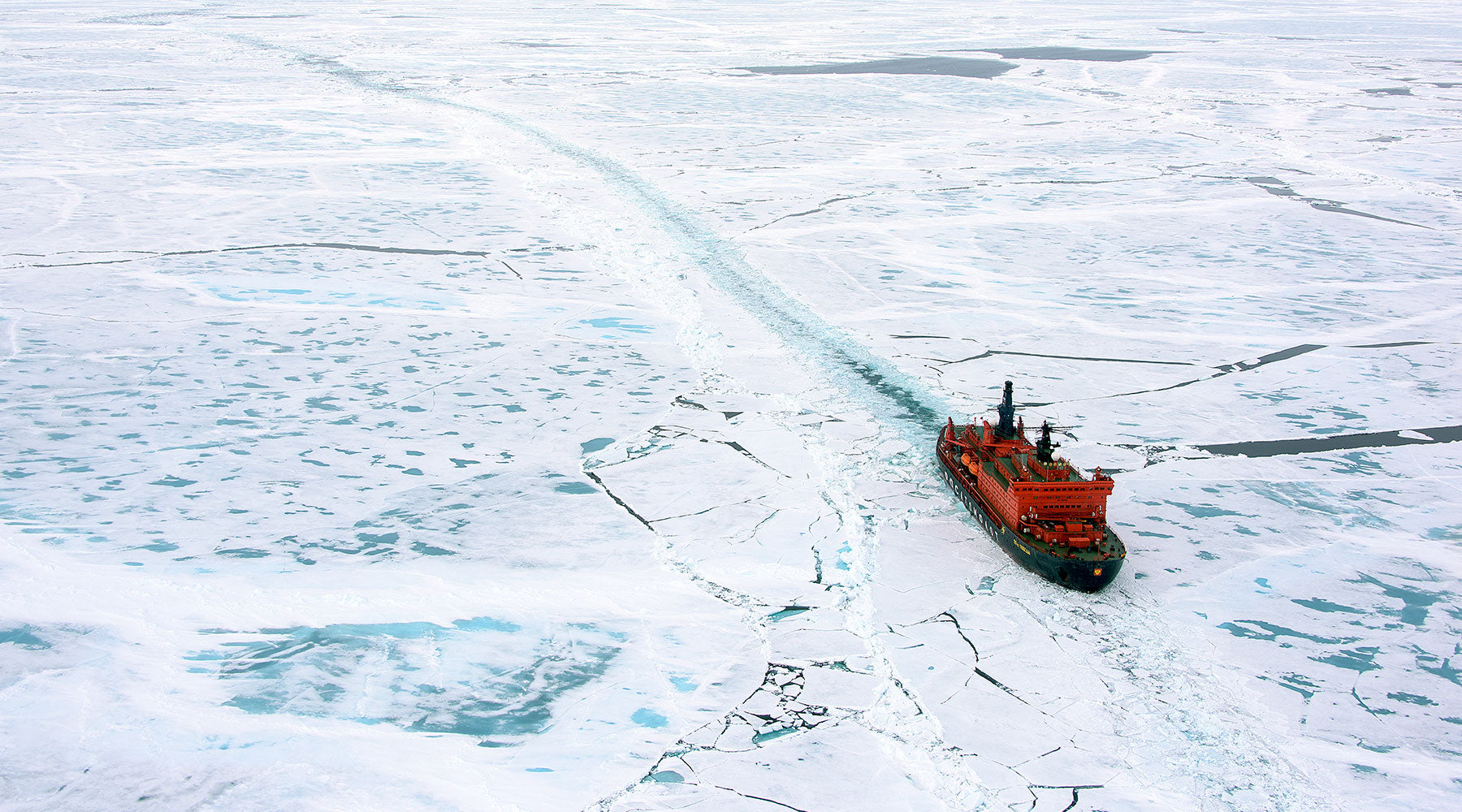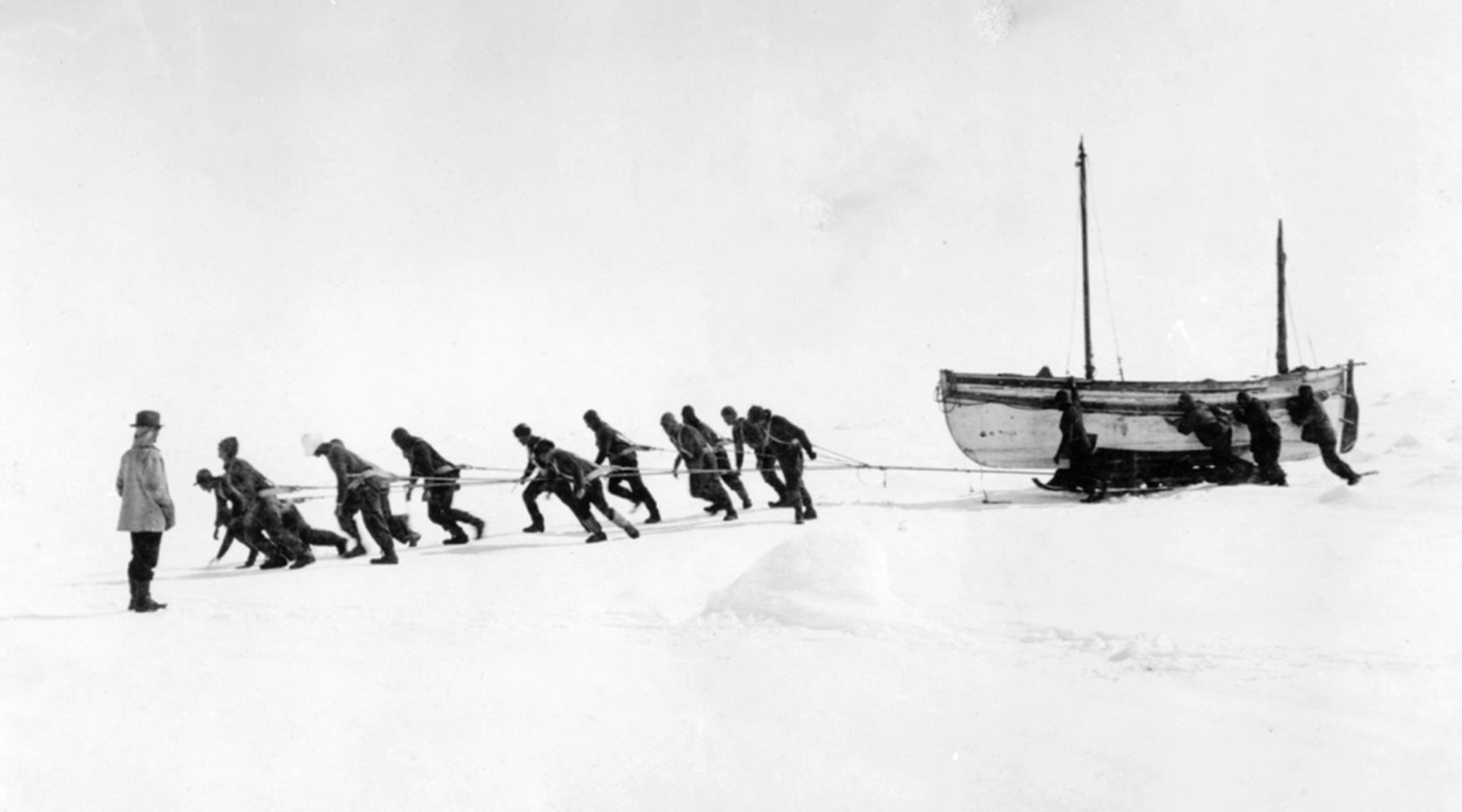
Capturing the Arctic – before it's too late
Photojournalist Christopher Michel joins an extraordinary journey to the North Pole on the world’s biggest icebreaker to capture an environment that is at grave risk of being lost forever.
The sun hasn’t set here in months. I’m sitting in absolute silence amidst a bright white plain of gritty ice crystals on a melting ice floe 14,000 feet above the sea floor. In the distance, I can see the icebreaker ship that brought me here and the Russian with the Gun. She’s here to protect me from hungry polar bears , and she’s not smiling.
This is the North Pole , a place so far away in distance and experience from the rest of our planet that it’s hard to know what to expect. A terra incognita of fantasy and saga; home to the narwhal and the polar bear. Until recently, virtually unknown.

In 1968, just one year before Neil Armstrong walked on the surface of the moon, the first confirmed surface conquest of the North Pole was achieved by Ralph Plaisted, a high-school dropout from Minnesota. He arrived over ice, by snowmobile. The North Pole is on water, requiring expeditions to traverse both ice and ocean. It had already been 50 years since Roald Amundsen walked upon the land-locked South Pole, and since Frederick Cook and Robert Edwin Peary made their now widely disputed conquests of the North Pole in 1908 and 1909.
Today, the North Pole has been visited by thousands – researchers, military personnel, explorers and a few tourists. Most arrive by submarine, aircraft and icebreaker. It’s estimated that there have only been 119 visits to the North Pole by a surface vessel. I was on the 115th.

If you want to take a surface ship to the North Pole, you’ll need the biggest, baddest, most powerful icebreaker in the world. Fortunately, the Russians have got you covered. This is the 50 Let Pobedy (50 Years of Victory), one of six Arktika-Class nuclear-powered icebreakers operated by Rosatomflot, the Russian State Atomic Energy Corporation.
50 Years of Victory is the world’s most powerful icebreaker. With two nuclear reactors, she generates 75,000 horsepower and is capable of breaking ice ridges almost 30 feet thick.
During the summer, Rosatomflot partners with polar experts, Quark Expeditions, to bring a small number of tourists, explorers and scientists to the Pole. The rest of the year, 50 Years of Victory clears ice in the increasingly accessible and valuable waters above the Arctic Circle.

We sailed from a closed nuclear facility in Murmansk, through the Kola Bay, onto the Barents Sea. The Kola Peninsula is brimming with Russian warships, shipwrecks, and curious communications facilities.
As the earth warms, the Arctic ice is melting at an alarming rate , making the once inaccessible Arctic the next major battleground for natural resources and national security. Russia recently filed a petition with the United Nations claiming exclusive economic access to 463,000 square miles of Arctic territory, including the North Pole. Natural gas reserves in this newly claimed area have been valued in excess of $25 trillion.

Two days out from Murmansk, we start to encounter sea-ice, a welcome juxtaposition from the cold-war era facilities of the Peninsula. Each degree of latitude brought more ice and more mystery. As the ice thickens, we enter the dominion of the polar bear.
Polar bears may look sweet, but they are the apex predators of the Arctic. Humans are food, just like every other living creature on the ice. Unfortunately, these magnificent, lone wanderers are suffering the effects of Arctic warming. As the sea-ice disappears, it takes with it the bear’s staple diet, seals.

Evolution at the extremes has led to some of the most incredible creatures on earth. Along with the occasional seal and polar bear, small herds of walruses can be seen along the seemingly endless ice-floes. Tusks are used to help walruses climb out of the water onto the ice.
If you don’t have a drone to explore the islands, a 70s era Russian MI-2 helicopter will do just fine. Stepping aboard this vintage helicopter requires the suspension of one’s normal life preservation instincts – pay no attention to the duct tape. The shipboard helicopter pilots are some of the best in the world and the scenery is to (almost) die for.

As we approach the pole, the ice thickens dramatically. Almost every other ship in the world would be stuck in this kind of ice. 50 Years of Victory is so powerful, she barely shudders as she smashes through the floes and pressure ridges.
After five days at sea, 50 Years of Victory arrives at the North Pole, 90 Degrees North, on an absolutely perfect, crystal-clear morning. Reaching the Pole has a peculiar quality, as it’s more of an idea than an actual, recognisable place. There is no research base, historical marker or any other indication that you’ve arrived anywhere special. Just a GPS saying 90.00°N.
‘No place to go but South,’ is an inside-joke at the pole. After a day of exploring (and swimming) at the North Pole, 50 Years of Victory turned south for her 1500-mile journey home to Murmansk.

There are few things more beautiful than ice, and with 24 hours of daylight, the view from the ship was an ever-changing kaleidoscope of geometric shapes and blue-green colours. Most nights it was hard to sleep with the idea that you would miss even a single second of the drama unfolding outside in the midnight sun.
Along our track home, we stopped to explore Franz Josef Land – it’s one of the most remote and mysterious archipelagos in the world. These Russian islands are a magnificent juxtaposition of flora, fauna, military bases, polar history, and abandoned research stations.

Shore landings at Franz Josef Land are conducted by Zodiac or helicopter. This remote archipelago was used extensively by the Soviets for military and research purposes. Entire bases lay abandoned and virtually untouched since the days of the Cold War.
As we turned South for the last time, Franz Josef Land gave us her best – a glassy sea mirroring the hauntingly beautiful Arctic sky.
One of our last nights at sea on the 50 Years of Victory was one of the most memorable, as we had a close encounter with a female polar bear. This female spied us from a mile out and came right toward the ship, making eye contact with me and others on deck. After an hour or so of trying to get inside, she walked slowly away, occasionally glancing back at us.

To me, the message was clear: this is her realm, not ours.
Today, there is an Arctic glimmer in the eyes of Capitalists and Sovereign Nations. We cannot turn back now – the Arctic is about to get a lot busier and a lot warmer. And in coming years the almost unbearable beauty of the Arctic is at grave risk of being lost forever.
Words and photographs by Christopher Michel. Discover more of his work at christophermichel.com


